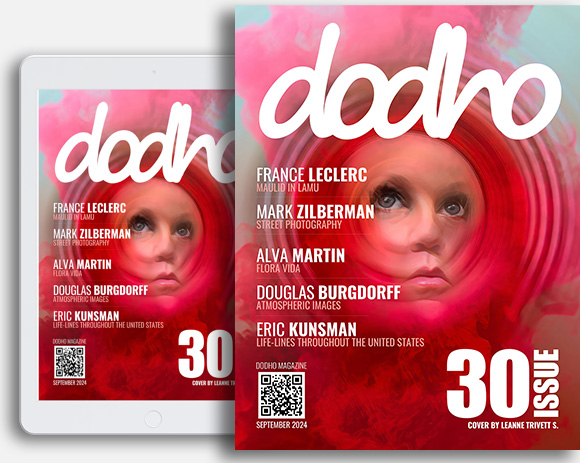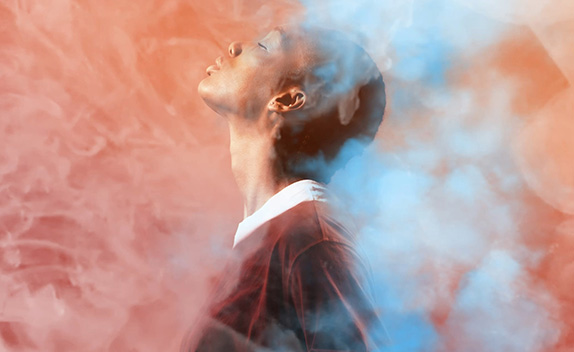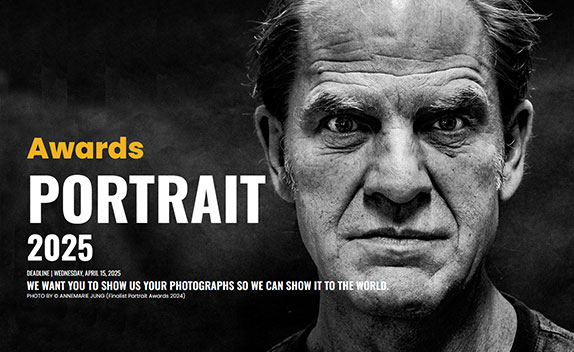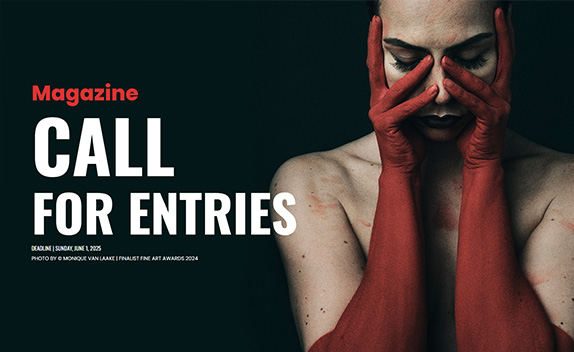Emerging photographer winner of a Second Place IPA Awards 2015, of a Third Place IPA Awards 2015 , a Silver Medal Prix de la Photographie (Px3) 2015 and a Bronze Medal Prix de la Photographie (Px3) 2015, as well as being finalist and several honorable mentions at other International awards.
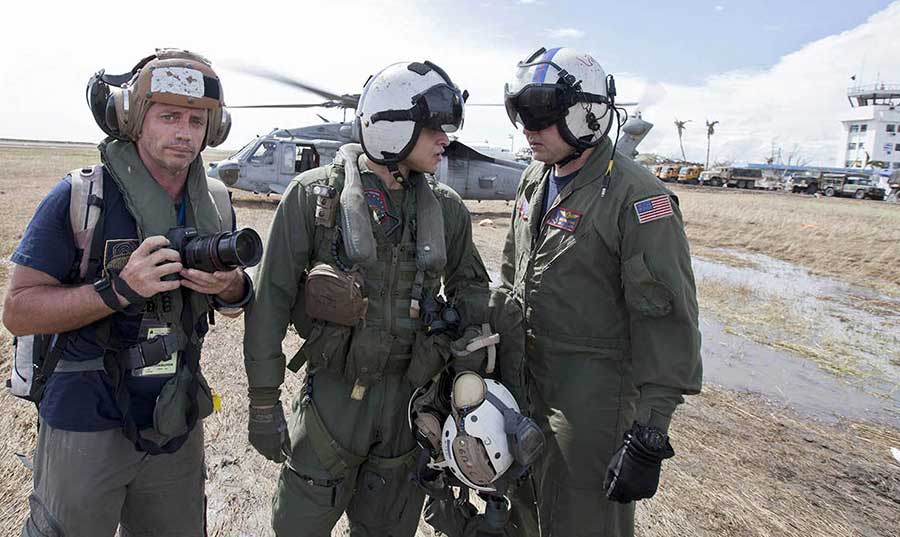
I was born in Madrid, Spain the 3rd of April 1965, as the son of a doctor who lived along with my mother in the Sahara desert dedicated to humanitarian causes. Education: Degree in International business management at the Schiller International University Germany (Heidleberg), 3 years of Biology studies at the University of Alcala de Henares and a degree in Philosophy, followed by a PHD still to be finished. Several advanced photography courses, video and editing. Languages; Fluent English, French and Spanish. Can speak and read Russian, German and also speak Chinese, (my wife is from Taiwan). Constantly I have been travelling, photographing and living in foreign cultures, so with the years I became a wandering chameleon who had lost his roots and always able to adapt to foreign environments, permanently travelling from one country to another, and living in Germany, Russia, USA, one year with a tribe from the Amazonian region of the Yasuni river (Ecuador), India, went to African countries, lived for one year in China, three years in Cambodia, and travelled through others; Peru, Ecuador, Guatemala, Panama, Burma, Tibet, Taiwan, Vietnam, Thailand, Malaysia, Laos, Nepal, many African countries and all over Europe. At the present I live travelling constantly throughout South East Asia, working on ongoing photographic projects and eager to face successfully the challenging ones, like the recent floods I covered in Cambodia or the Philippines typhoon disaster.
I regularly publish photojournalism articles for the online Spanish newspaper “Periodistas en Español” and have exhibited recently works at the Museum of Las Escuelas (Spain), at the Phnom Penh airport and at the National Museum (Cambodia), during the MOPLA in L.A 2015 by the LUCIE FOUNDATION and at the present moment and until the end of November 2015 at a museum in Toscana (Italy) by the Siena International Awards. My recent work has been published at the book “Beyond the Lens”.
INTO THE TRANCE STATE – Second place award at the IPA 2015
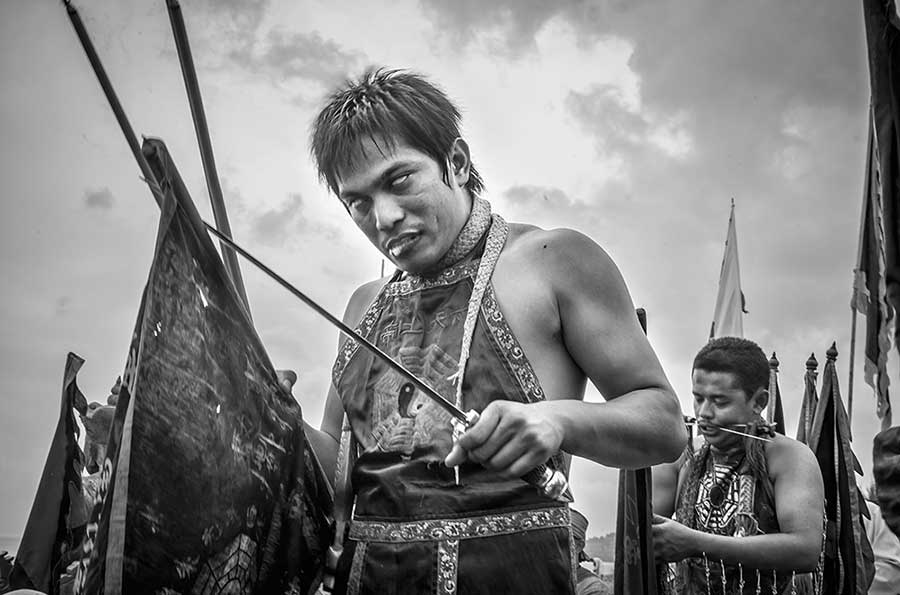
Waiting for their arrival before the ocean and congregated along with several others, all of the sudden a medium becomes in a deep state of trance, and saliva starts dripping from his mouth while he gets ready to perform different acts of self mutilation in order to appease the Gods. Throughout his actions he will be speaking tongues and his voice will change.
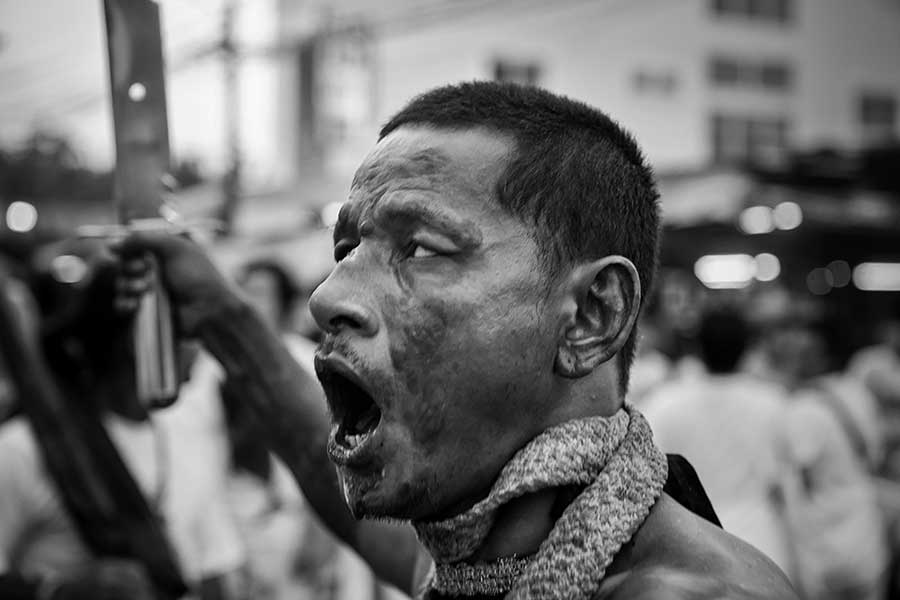
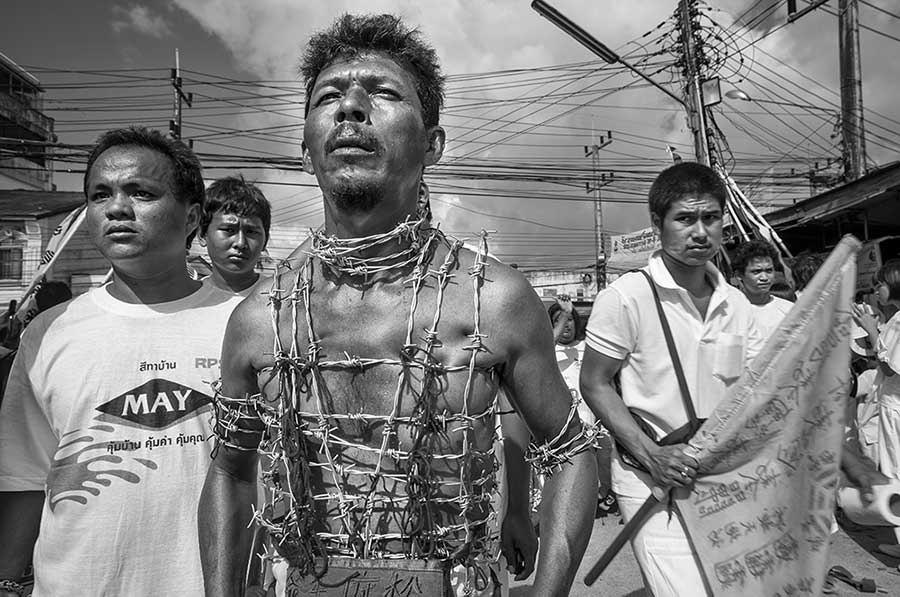
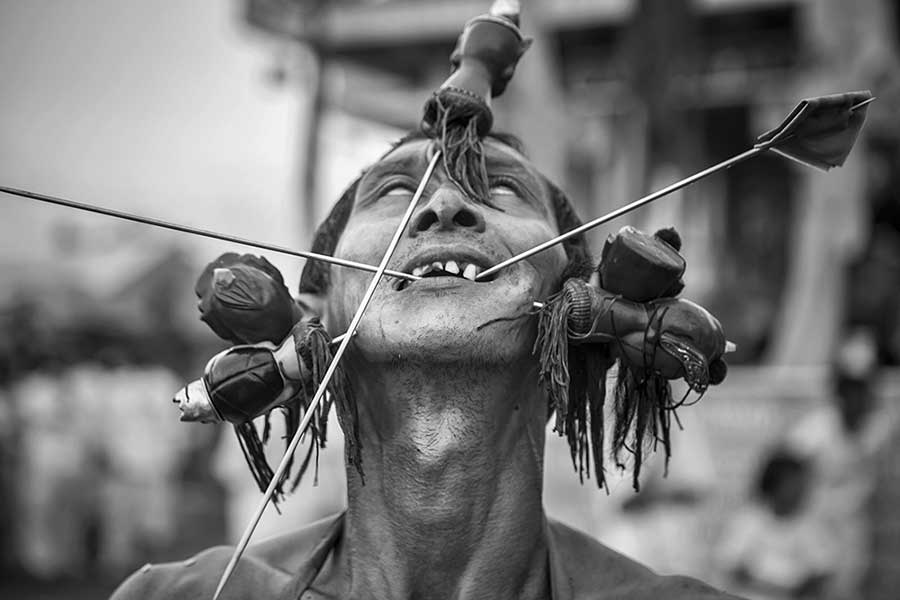
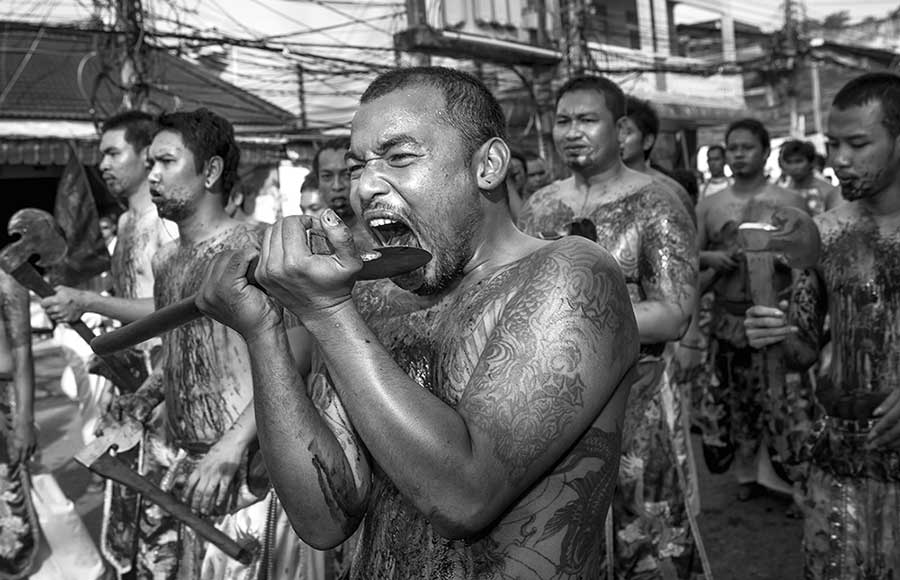
I consider myself a truly emerging photographer. Although I have been for many years working on different photography projects and assignments, it is only on 2014 that I decided to make more exposure out of my photography, encouraged by some professionals in the field who told me it would be worthwhile. Up until today (which means 2014-2015) my photography was awarded several international awards, more than twenty honorable mentions and became finalist for three times at other international awards. To be honest, never I had the hope of such a fast public career. When in September 2015 while living in Cambodia in the middle of the night someone notified me that I had just got two IPA awards for two totally different series, I thought I was dreaming. I suppose that if we all pursue a dream with strength and stubbornness enough, that dream might come true one day.
PORTRAYING THE CHILDREN OF THE DUMPSITE – Third place award at the IPA 2015
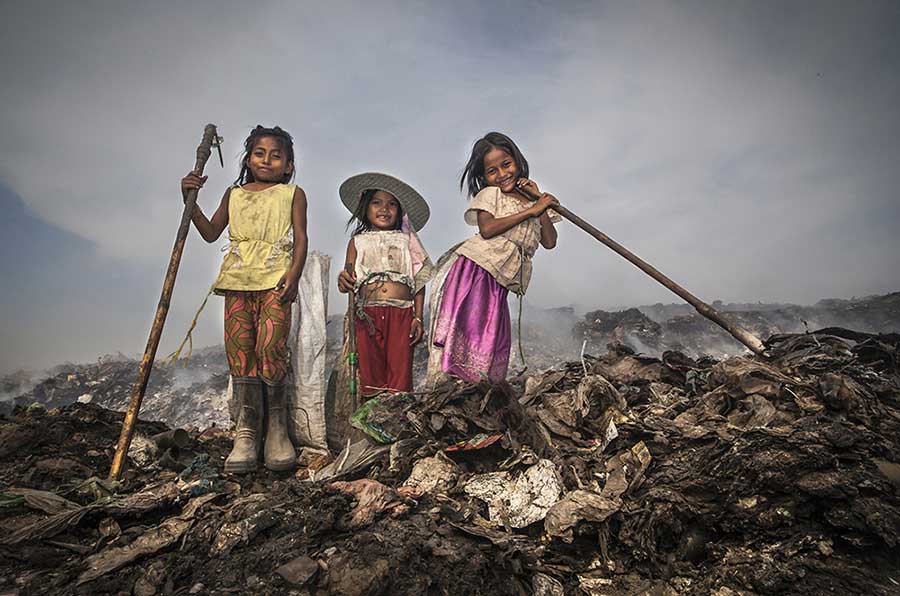
For one reason, the youngest one presents the key to her wooden slum hanging from her neck , which means that no one will be waiting for her upon her return for dinner time or even throughout the night. A further look shows that they do not wear any protecting gloves, which are extremely important for the scavengers, specially when the sun starts to go down and the light becomes scarce and they cannot see well. They are continuously digging and picking up stuff which might well have cutting edges , or worst of all ; they can unknowingly pick up medical waste or piercing contaminated needles, which happen to be thrown all over the place.
On the other hand they are going to be working in an area which has been recently set on fire, and the toxic fumes continue to exhale from the piles of waste, and they will also be walking over piles of coals and burning embers which are prone to collapse underneath them.
Under the extreme heat coming from the ground and their continuous walk wearing their rubber boots without socks, their feet become swollen ,sweaty and blistered. At some places the fire is still high, and if they dare to go through the paths delimited by the fire -particularly at night- due to the smoke they can easily become intoxicated and
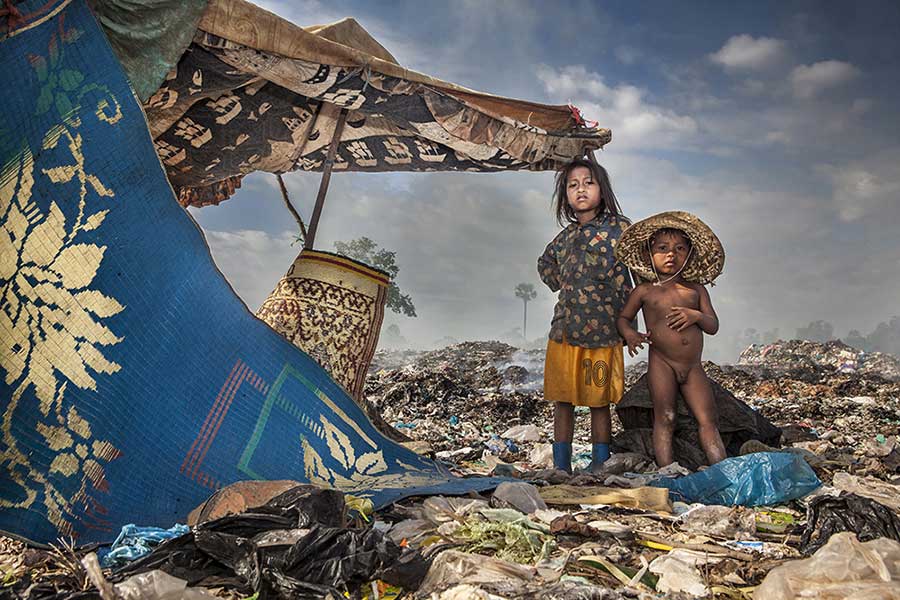
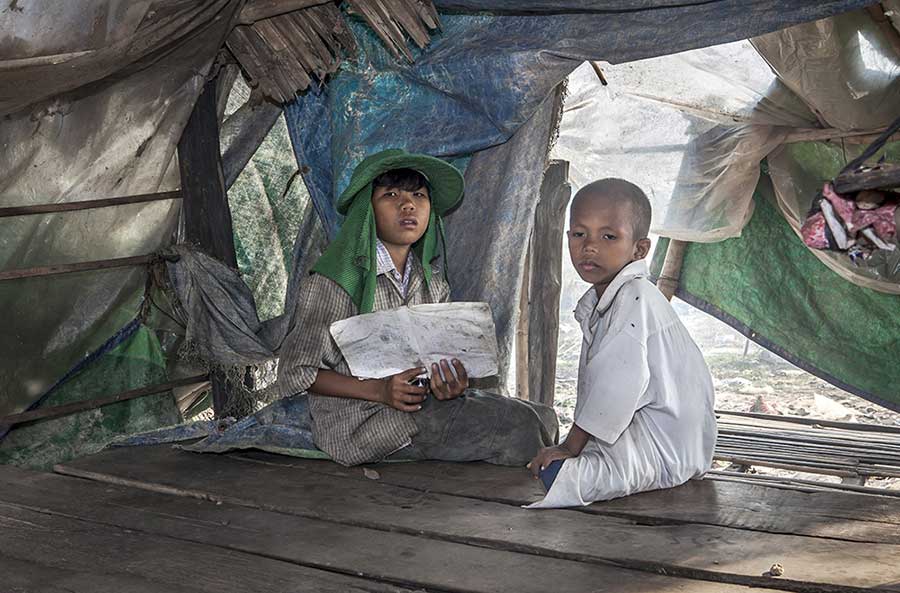
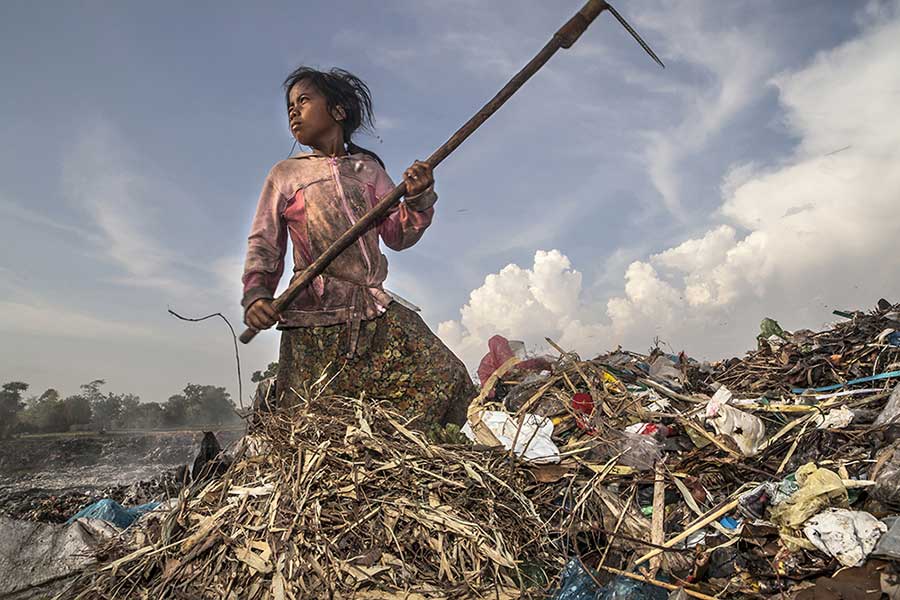
Despite having ratified in the year 1999 the Minimum Age Convention and the Worst Forms of Labor Convention in 2006 which are implemented by the International Labor Organization, Cambodia still has a significant amount of children involved in different forms of child labor. Among these forms perhaps one of the worst ones is Scavenging. due to the health risks, although within scavenging kids we can distinguish two types; the ones that go wandering about towns riding bicycles and gathering plastic bottles or cans thrown in the garbage cans or sometimes piled up in front of a food store or a restaurant , and the ones who remain active scavenging at a dumpsite, being the task of these ones the hardest one to accomplish. Although most of the children involved in child labor imply the fact of skipping school, which already represents a damaging fact for their futures , we have to understand that scavenging at the dumpsite represents by itself one of the worst forms of child labor, since it implies digging for many hours without any certainty that anything valuable will be found, since most of the garbage has already been searched by other scavengers before its arrival to the dumpsite.
As soon as the sunlight will begin to fade out, Chakriya will pull out her head lamp in order to continue working, but at
I would consider myself a humanitarian photographer in the sense that I focused much of my photography for the past years into projects to help NGOs dealing with humanitarian issues to get their message out. Although most of what I dealt with had to do both with humanitarian and environmental issues, the fact that some projects had been quite stressful (for example I had to deal with such sad and difficult issues as acid violence, a typhoon tragedy where thousands of people died, floods, handicapped children, poverty, over exploitation of the natural resources due to selfishness and others dealing with environmental concerns) made me aware that in order to continue working successfully it a rest was highly needed, so instead of finding some holidays I decided to work on projects that had nothing to do with what I was doing and required a totally different way of thinking and approaching subjects.
Most of these projects had to do with the human condition, and maybe the one I worked most at I named “ASIAN RITUALS”, from which the award winning series ; “INTO THE TRANCE STATE” represented just one very small part of it. As a matter of fact, “ASIAN RITUALS” has been up until today a very ambitious project, which tries to give expression to different Asian rituals captured all over Asia during more than five years and which because of the globalization are tending to disappear. The final goal is to publish a book and hopefully to get an editor interested in the project.
On the other hand, one other project that mixed the humanitarian aspect with the challenges of a long term project, I gave it an initial name of “INTO THE DUMPSITE” which constitutes a deep analysis of the Scavenger society as one of the paradoxes of the modern world of consumption; while one society accumulates all kinds of material goods, the scavenger society lives on what others throw away. This kind of lifestyle reflects a totally different way of interpreting life; their children are born into that world and therefore believe this is the way the world is supposed to be, they play and have fun surrounded by waste without any feelings of self-pity. The daily arrival and departure of trucks full of garbage becomes their daily routine and their source of novelties and of income.
The idea of this project is as well to publish a book and hopefully a travelling photo exhibit which could be used to educate the children at schools and the modern society in general on a awareness tips about a wounded planet, about the point of no return of the society of consumption and on what can be done about it.
As I said before, when working at different projects at the same time, I try to work on totally different projects which can make you rest from the others and make you as well meet totally different challenges, and that is precisely on what is based another of my ongoing projects, which I named; “OVERFISHED OCEANS; THE PATH TOWARDS SELF DESTRUCTION”. Curiously enough, I started of working on this subject because most of the case studies of victims who had been attacked with acid and from whom I had to document their lives, tended to ambition very much to go out in front of the ocean. The open breeze and the endless sight of water made them relax extremely much, and since they were all suffering from Post Traumatic Stress Disorder, to go to the ocean was a highly recommended activity. This other project also had and has an environmental profile, and deals with the human ambition of making profits out of every natural resource they become in contact with.
I must first say that the statement that it to be present throughout my environmental photography is that we, the human generation that lives at the present, didn’t receive our ecological legacy as the last generation who was supposed to inherit it, but on the opposite, we are to pass it exactly as we received it onto future generations.
Although I am aware that this is quite a difficult goal to achieve, if you set up yourself a highly placed goal, the achievements might also reach higher.
Winners of Three Gold, One Bronze medals at the Prix de Paris de la Photographie 2014 and finalist series at the Siena Awards 2015.
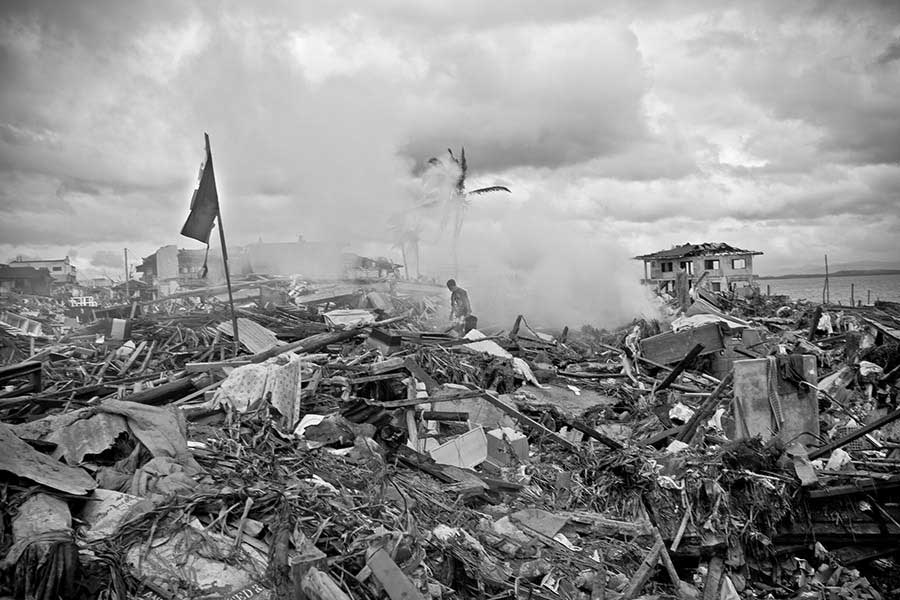
During the aftermath, I boarded onto a military plane with destination to the airport of Tacloban managing to join US helicopter flights delivering relief aid, body rescue teams (land and water) and medical teams. The whole ordeal was not only one story of sheer horror but a story of beautiful human values of heroism and solidarity, and this sequence wants to honor all of those heroic and solidary Philipinnos and foreigners who went there to help despite the risk and the pain.
In the beginning, the people were wandering about like zombies, without any water or food, desperate to help the wounded, or their beloved ones, Since they had no water food or shelter; they also didnt have time to mourn the dead or to search for their bodies; everything had turned into a matter of desperate survival. This extreme situation was followed by the looting of small stores and supermarkets, and since the situation was getting very dangerous, special forces were sent and a curfew was enforced.
The bodies were found everywhere, many trapped into the debris and others in body bags or floating in the ocean.
While delivering relief aid, some helicopters got assaulted , and the people at the most isolated areas fought violently to reach the goods. Soon after, many typhoon victims queued for days without shelter waiting for a flight to an evacuee center in Manila, becoming refugees in their own country.
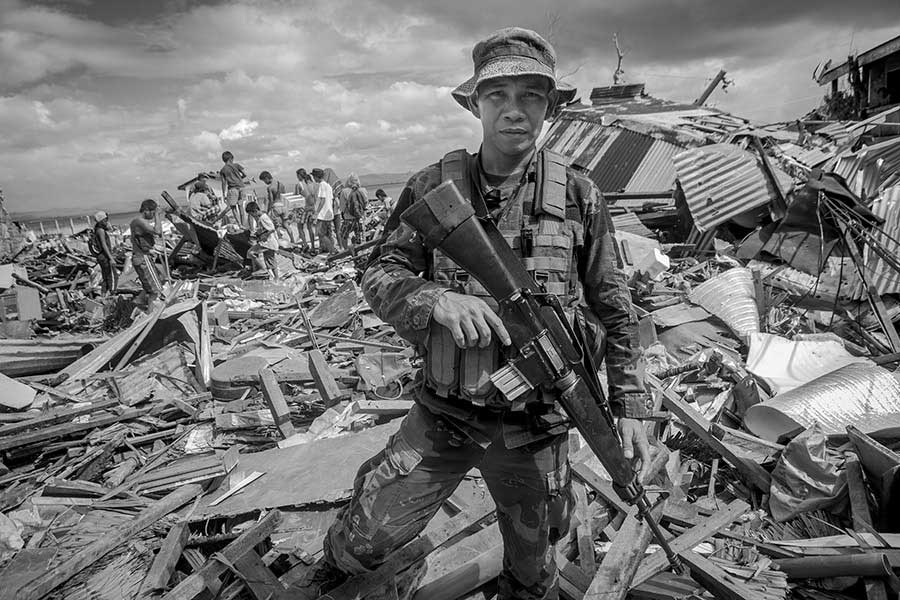
I was walking through a side road close to the street of Magallanes, when all of a sudden we heard some women screaming that the remainings of their homes were being ransacked. A heavily armed military team rushed to the area , and despite their warnings that it could be quite dangerous to follow them since the looters could be armed and there was a most probable risk of confrontation, I run behind the team. We climbed over a pile of debris to see two groups of youngsters about to engage in a violent confrontation, so the military police pointed their arms at them and sorrounded them. Apparently, it all had started when a young girl had tried to gather some scattered dvds that belonged to a deceased person, and a member of the family of the deceased had tried to attack her exclaiming that the girl had been going in and out of a hole between the debris where the home of the victim had been before. The confrontation attracted many relatives and young friends of both families, and had it not been because of the military police intervention it could have escalated into a violent outburst.
Since the policy of the Philippines Government regarding people who looted small items mainly for survival had been that one of a very understandable forgiveness, there were no detainees, although some of the teenagers had tried to steal more valuable items.
Right after the typhoon ,gangs of people wandered about in panic like zombies and since they lacked water and food ,they engaged in looting and very soon there was a huge mob trying to ransack homes and stores, the same mob that went into the Robinsons supermarket and stole all kinds of items, including televisions, computers and washing machines.
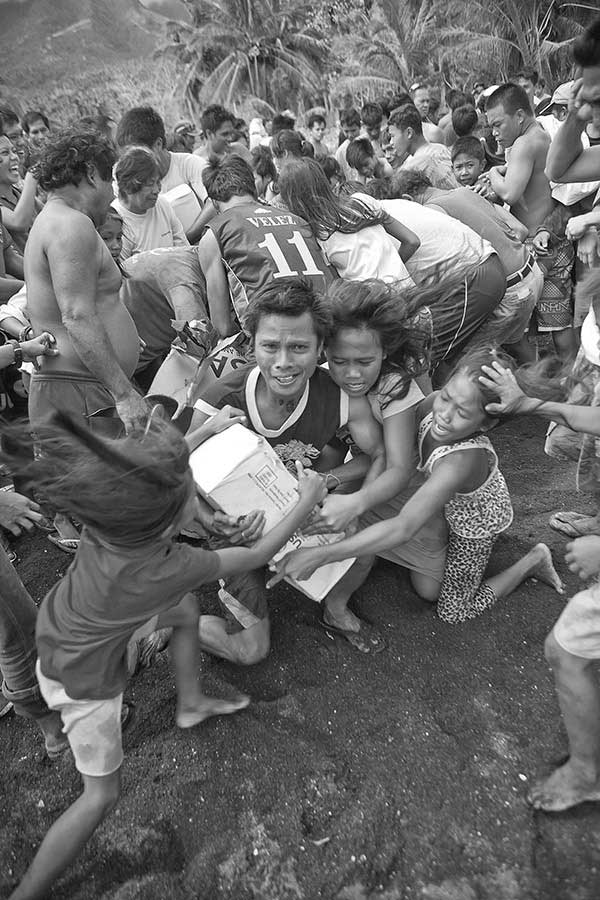
In order to prevent an assault to the helicopter, one pilot remained in the cabin ready for take off.
As the load was being deposited on ground next to the tape, the crowd grew bigger and bigger and the bigger it grew , the more it seemed it was about to lose control, so the pilots, aware of that told me to rush into the helicopter and while we were taking off an extremely violent fight over the goods started to take place.The last pilot onboard even had some time before takeoff to shake hands with some of the people who felt extremely grateful towards them.
Once we took off onboard of the helicopter the pilots started breathing oxygen from an onboard oxygen supply to avoid exhaustion.
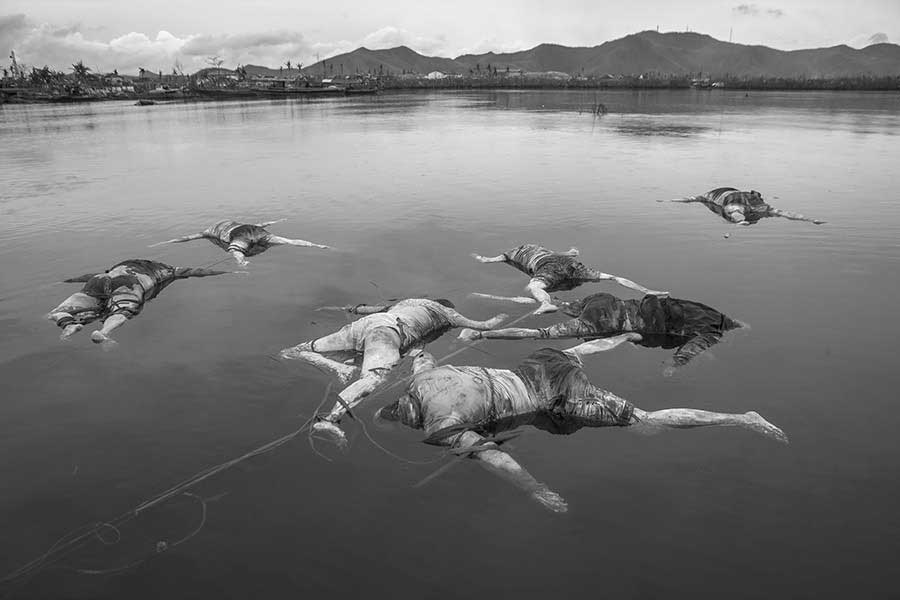
The project “OVERFISHED OCEANS; THE PATH TOWARDS SELF DESTRUCTION”, of which five images of the series won a Silver medal award at the Prix de Paris de la Photographie 2015 at the environmental professional press category, had and has the goal of exposing the extremely selfish human ambition of turning every fish species that swims in the ocean into economic profits, without any regard towards a more sustainable interpretation that could save thousands of species from extinction. The work analyzes the evolution from a sustainable fishing community which has profit goals within the possibilities of the environment till the modern fishing industry which only focuses in the fast and massive earning of profits.
Besides the projects I have talked about, I currently undertake both humanitarian and environmental assignments and as a very important goal I try to document myself as much as possible on every new and ongoing project, since probably this has much to do with it succeeding and with the creation of new images.
Winner series of a Silver Medal at the Prix de Paris de la Photographie 2015
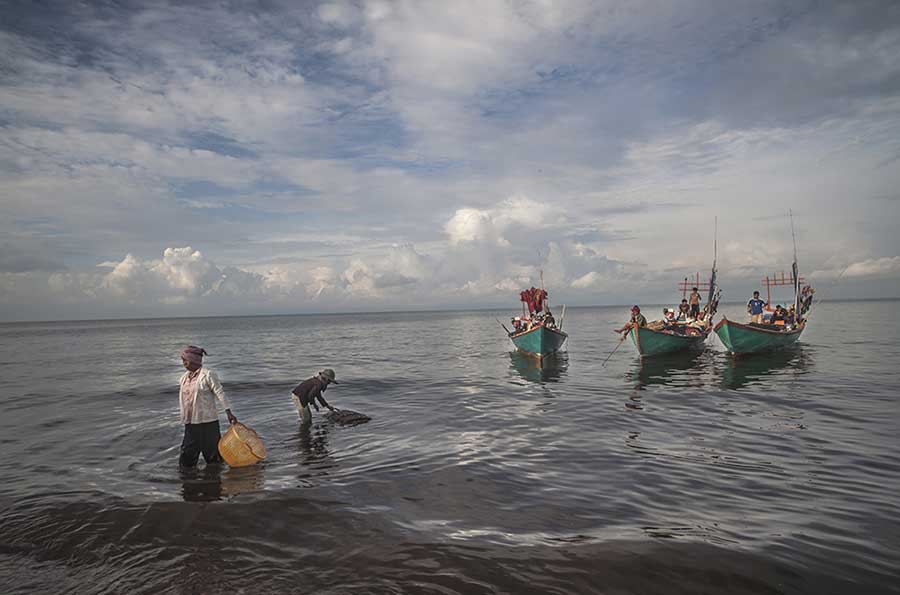
Originally, the sustainable foundations of the community were based on the fact that they fished to survive, and although they also needed to trade or sell some of the fishing surplus to the market, the fishermen lived a calm life and spent at the ocean only the necessary hours to make it possible. By fishing different species at different times of the year, they were giving time for the previously fished species to recover.
Today , the fishing trend of the community has slowly ceased to fish different species and centered themselves almost exclusively in the fishing of the crab. The reasons were clear, since the fishermen found out that their waters were extensively populated by different species of crab and all of them reached an extremely high market value, not only in Cambodia but in the South East Asian markets, it became much more profitable to center their captures fishing exclusively crabs, disregarding the fishing of other species to a considerable extent.
The once peaceful life of the community has taken a wild rhythm and while the fishermen spend most of their time fishing at the ocean, their wives will spend it making artisanal fishing traps or selling the crabs at the market for increasing their surplus profits.
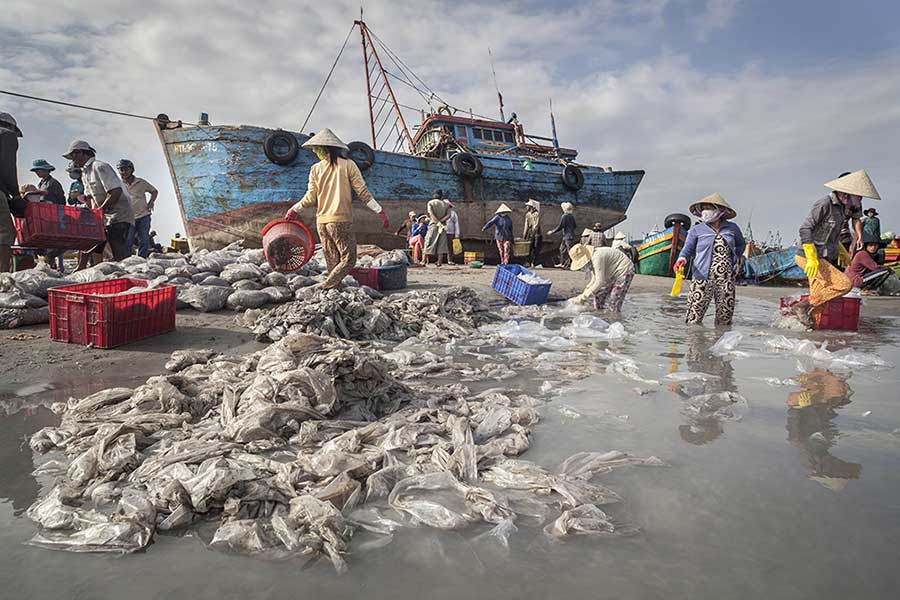
As a curious observation, the fishermen of Mui Ne have already become aware of the damaging environmental effects that the practice of throwing plastic bags into the ocean has brought into their fishing, and since these acts where directly affecting their profits, they opted for recycling the plastic bags. After the arrival of the fishing boats and when all the women had gathered and weighed the fish laying inside the plastic bags, they carefully proceeded to pile up all the plastic bags and washed them very carefully in order to be able to use them again and again.
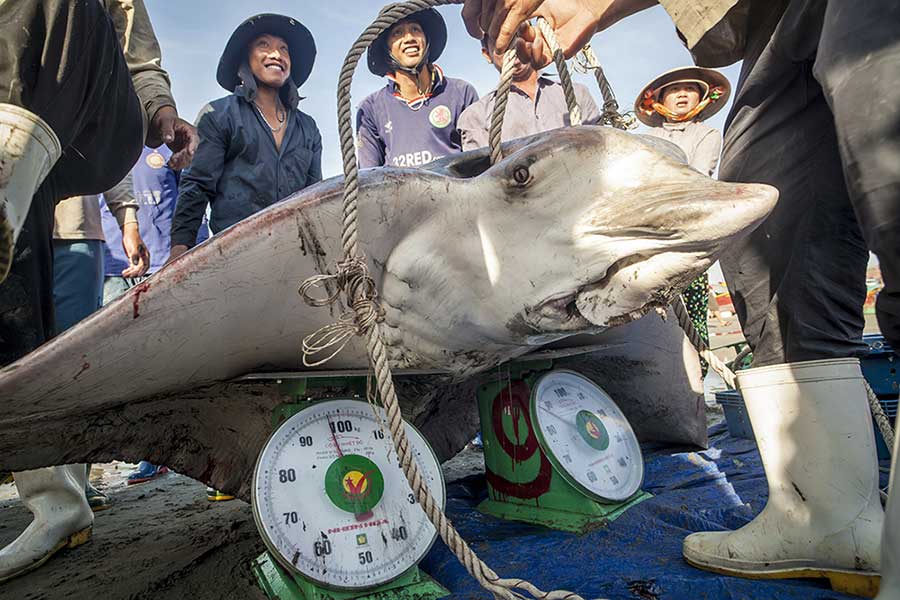
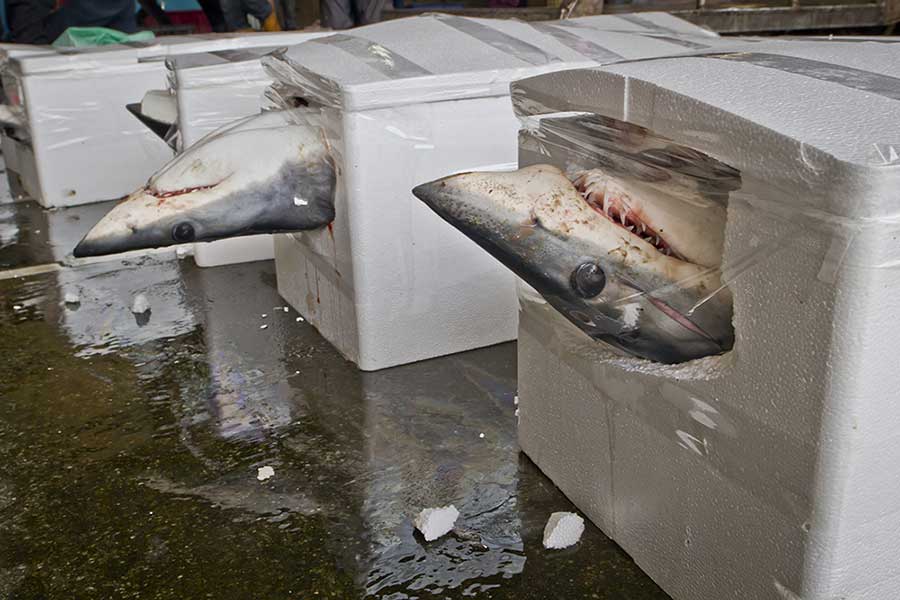
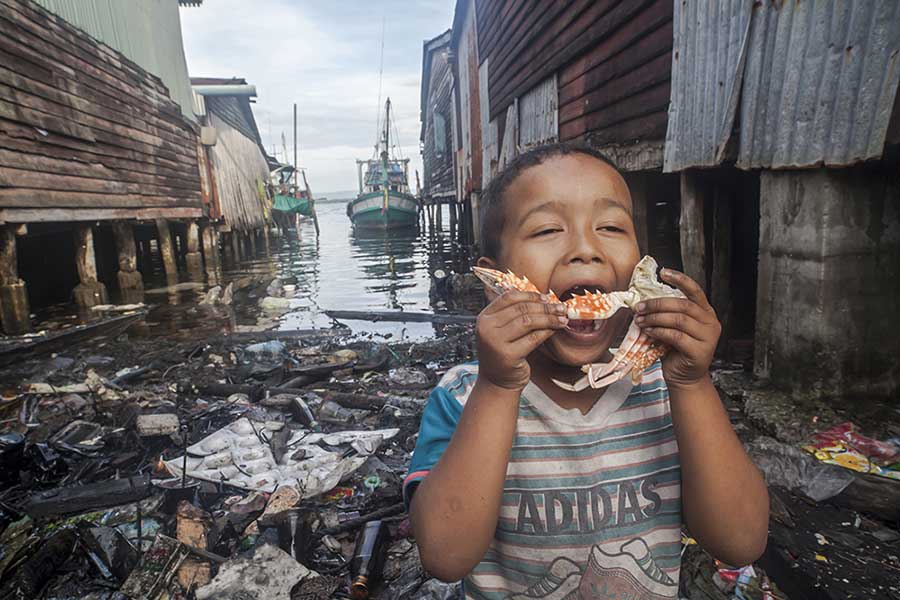
The once extremely beautiful peaceful, idyllic and transparent waters in where this fishing village was established have been turned into a dumpsite throughout the years, and the locals, who were once able to fish close to the coast, find it harder and harder to harvest any captures, and in order to succeed they need to cover very long sailing distances and spend much more time out in the ocean. As an added difficulty and due to the climate change, the waters have raised extremely high, flooding the village each year and threatening to make it disappear beneath the waters.
Some of the locals have already relocated themselves inland Cambodia, well aware that the village is doomed, but others , although they certainly do consider that alternative, keep waiting there , because as they say, “they have no other place to go and no other way of earning their lives”.
In the beginning, as one of the old inhabitants said, they thought that mother nature could swallow all the waste they dumped there because it usually was always carried away by the waters, so none of them thought about pollution.
As the number of inhabitants increased due to the comparatively high status living status in relation to the inland living Cambodians, more and more wooden homes were constructed standing on pillars over the waters.
Curiously enough, no one thought about any means of disposing their increasing waste or any sewage systems, so the continuous impact of throwing of the garbage into the water plus the throwing of toxic liquids has not only changed the biodiversity surrounding the village, but has solidified into a permanent waste land, and the waters do not drag away the waste anymore.


